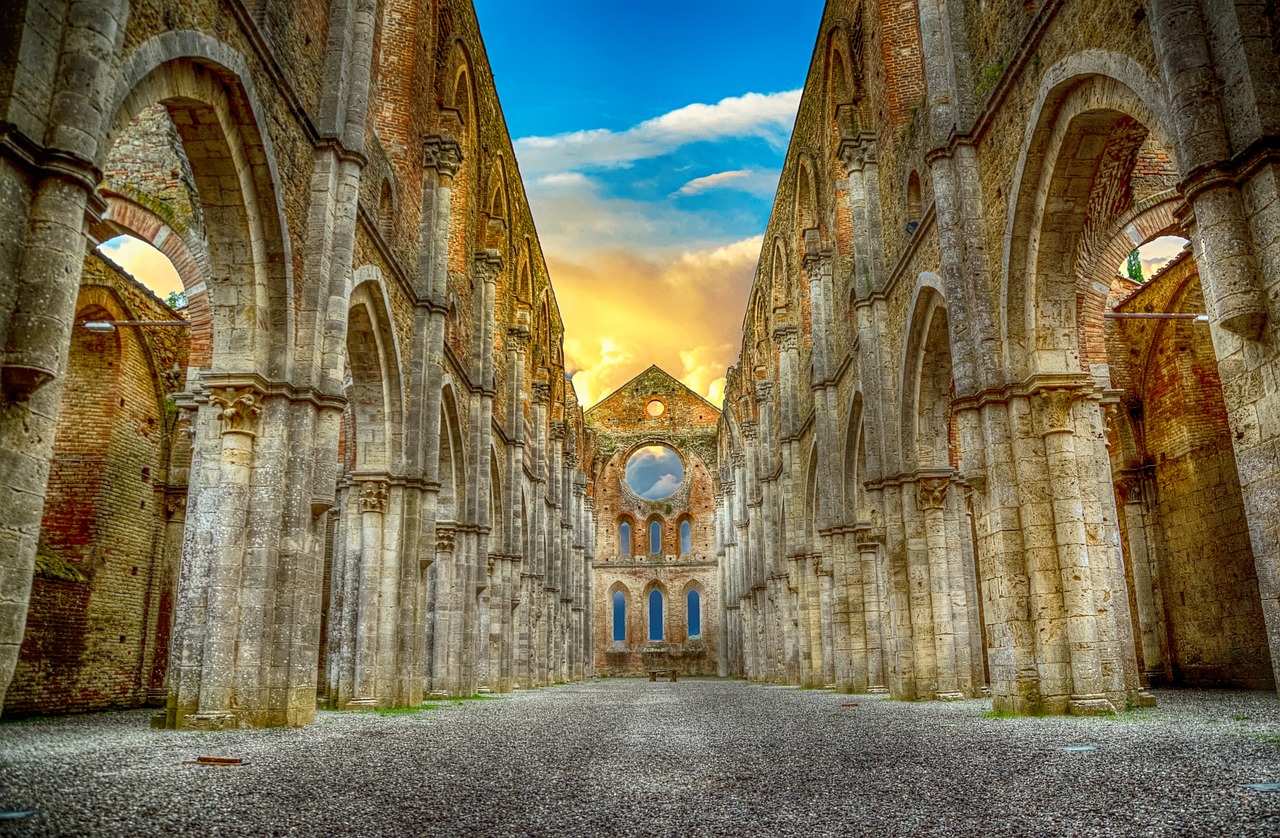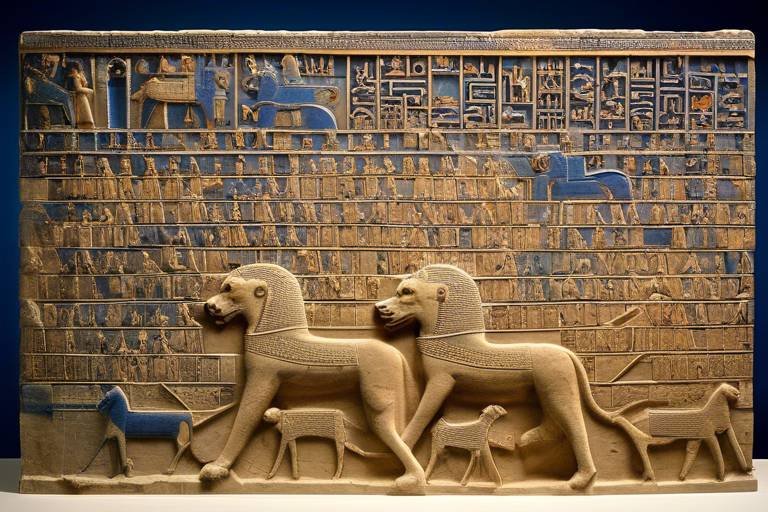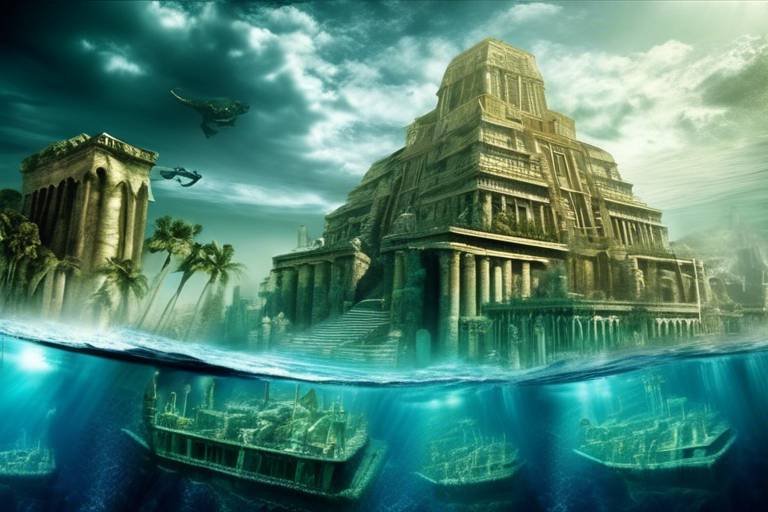The Enigma of the Ancient Persian Empire
The Ancient Persian Empire stands as a captivating enigma in the annals of history, shrouded in mystery and intrigue. This powerful empire, renowned for its vast expanse, innovative governance, and cultural opulence, continues to fascinate and bewilder historians and enthusiasts alike.
Originating in the 6th century BCE under the visionary leadership of Cyrus the Great, the Persian Empire swiftly rose to prominence, expanding its territories to become the largest empire of its time. The empire's rapid ascent to power remains a testament to its strategic prowess and organizational acumen.
Delving into the administrative brilliance of the Persian Empire unveils a sophisticated system characterized by the utilization of satraps, a well-structured postal service, the introduction of standardized coinage, and the construction of the renowned Royal Road. These administrative innovations not only facilitated governance but also fostered economic prosperity and cultural exchange.
One of the most remarkable aspects of the Persian Empire was its embrace of cultural diversity and tolerance. Governing a vast array of cultures and religions, the empire promoted an environment of inclusivity and respect for local customs, setting a precedent for harmonious coexistence among diverse populations.
Exploring the artistic achievements of the Persian Empire reveals a rich tapestry of creativity, from the majestic architecture of Persepolis to the intricate designs adorning pottery and metalwork. This artistic legacy, influenced by a blend of cultural elements from across the empire, continues to inspire awe and admiration.
The military might and strategic acumen of the Persian Empire were unparalleled in ancient times, characterized by innovative tactics such as the use of cavalry, the elite Immortals, and strategic alliances with neighboring powers. These military innovations solidified the empire's dominance on the battlefield and secured its territorial expansion.
Despite its formidable strength, the Persian Empire eventually faced internal discord, external invasions, and the conquests of Alexander the Great, leading to its gradual decline and ultimate fall. The factors contributing to the empire's demise serve as a cautionary tale of the fragility of power and the inevitability of change.
The enduring legacy of the Persian Empire reverberates through the corridors of history, influencing the cultural landscape of modern Iran and beyond. Its artistic and architectural achievements continue to inspire admiration, while its portrayal in popular culture and historical scholarship ensures that the enigmatic empire remains a subject of fascination and study.

Origins and Rise to Power
Exploring the mysterious and intriguing aspects of one of the most powerful empires in ancient history, the Persian Empire, known for its vast territory, innovative administration, and cultural richness.
The origins of the Persian Empire can be traced back to the 6th century BCE, when Cyrus the Great laid the foundation for what would become a colossal empire. Rising from humble beginnings, Cyrus united the various tribes of Persia and embarked on a series of conquests that would eventually establish the Persian Empire as the largest the world had ever seen.
Under Cyrus's rule, the empire expanded rapidly, incorporating diverse regions and peoples into its fold. His military prowess and diplomatic acumen allowed the Persians to conquer vast territories, from the Indus Valley to Egypt, creating a sprawling empire that spanned continents.
One of the key factors behind the Persian Empire's rise to power was Cyrus's progressive policies, which emphasized religious and cultural tolerance. This approach not only facilitated the integration of conquered lands but also fostered a sense of unity among the diverse populations under Persian rule.
Moreover, Cyrus's innovative administrative techniques, such as the division of the empire into satrapies overseen by appointed governors, streamlined governance and ensured efficient management of the vast territory. The establishment of a postal service, standardized coinage, and the construction of the Royal Road further enhanced the empire's cohesion and facilitated communication and trade.
The Persian Empire's ascent to dominance was marked by a combination of military might, visionary leadership, and administrative brilliance, setting the stage for a remarkable chapter in ancient history.
- What were the key factors behind the rapid expansion of the Persian Empire?
- How did Cyrus the Great's policies contribute to the empire's success?
- What role did administrative innovations play in governing such a vast empire?
- Why is the Persian Empire considered one of the most influential civilizations in history?

Administrative Brilliance
The Administrative Brilliance of the Persian Empire was a testament to its innovative and efficient governance structure. At the heart of this administrative prowess was the use of satraps, which were provincial governors appointed by the central government to oversee specific regions. This decentralized system allowed for effective management of the vast empire, ensuring that local affairs were handled efficiently while maintaining loyalty to the central authority.
One of the most remarkable achievements of the Persian Empire was the establishment of a postal service, which facilitated communication and the swift transmission of messages across the empire. This network of messengers played a crucial role in maintaining cohesion and control over distant territories, enabling the rapid dissemination of orders and information.
Furthermore, the Persian Empire introduced a system of standardized coinage, which promoted economic stability and facilitated trade within the empire. The use of uniform currency across different regions simplified commercial transactions and contributed to the empire's prosperity.
The construction of the Royal Road stands as a testament to the administrative brilliance of the Persian Empire. Stretching over 1,600 miles from Susa to Sardis, this well-maintained highway facilitated the movement of troops, officials, and goods, enabling swift communication and efficient transportation across the empire.
For the FAQ section, you can add the following:Q: What was the significance of satraps in the administrative system of the Persian Empire?
A: Satraps played a crucial role in overseeing provincial governance and maintaining order within the empire. They acted as the eyes and ears of the central government, ensuring that local affairs were managed effectively while upholding the authority of the Persian king.
Q: How did the Royal Road contribute to the administrative efficiency of the Persian Empire?
A: The Royal Road facilitated swift communication and transportation across the vast territories of the empire. It allowed for the rapid movement of troops, officials, and goods, enabling the central government to maintain control and unity over distant regions.
Q: What impact did the standardized coinage system have on the economy of the Persian Empire?
A: The adoption of standardized coinage promoted economic stability and facilitated trade within the empire. It simplified commercial transactions, encouraged economic growth, and contributed to the prosperity of the Persian Empire.

Cultural Diversity and Tolerance
The within the ancient Persian Empire was a remarkable aspect that set it apart from many other contemporary civilizations. The empire's approach to governing a vast array of cultures and religions was characterized by a unique blend of tolerance and respect for local customs. Rather than imposing a homogenous culture, the Persians embraced diversity and allowed different traditions to flourish under their rule.
One of the key mechanisms through which the Persian Empire maintained cultural harmony was through the appointment of satraps, who served as governors of the various provinces. These satraps were often chosen from the local population, ensuring that regional customs and traditions were respected and preserved. This decentralized form of governance allowed for a high degree of autonomy while still maintaining loyalty to the central authority.
Furthermore, the Persian Empire's policy of religious tolerance was groundbreaking for its time. Unlike many other ancient empires that sought to impose a single religion on their subjects, the Persians allowed freedom of worship and even provided financial support for the restoration of temples and religious sites. This inclusive approach fostered a sense of unity among the diverse peoples under Persian rule.
The empire's commitment to cultural diversity extended to its artistic endeavors as well. Persian art and architecture reflected a fusion of influences from various regions, resulting in a rich tapestry of styles and techniques. From the majestic palaces of Persepolis to the intricate pottery and metalwork found throughout the empire, Persian artistic achievements continue to captivate and inspire admirers to this day.
In essence, the Persian Empire's embrace of cultural diversity and tolerance served as a foundation for its lasting influence on subsequent civilizations. By recognizing and celebrating the differences among its subjects, the empire created a legacy of inclusivity and mutual respect that continues to resonate in the modern world.

Art and Architecture
Exploring the mysterious and intriguing aspects of one of the most powerful empires in ancient history, the Persian Empire, known for its vast territory, innovative administration, and cultural richness.
Investigating the humble beginnings of the Persian Empire in the 6th century BCE under Cyrus the Great and its rapid expansion to become the largest empire the world had seen.
Delving into the sophisticated administrative systems of the Persian Empire, including the use of satraps, a postal service, standardized coinage, and the famous Royal Road.
Exploring the empire's unique approach to governing a diverse array of cultures and religions, fostering an environment of tolerance and respect for local customs.
Examining the artistic achievements of the Persian Empire, from the grandeur of Persepolis to intricate pottery and metalwork, showcasing a blend of influences from across the empire.
Highlighting the enduring impact of Persian art and architecture on subsequent civilizations, including the Hellenistic world and the Islamic Golden Age.
Analyzing the formidable military tactics of the Persian Empire, such as the innovative use of cavalry, the elite Immortals, and strategic alliances with other powers.
Investigating the factors that led to the eventual decline and fall of the Persian Empire, including internal strife, external invasions, and the conquests of Alexander the Great.
Reflecting on the lasting legacy of the Persian Empire in modern Iran and beyond, as well as its portrayal in popular culture and historical scholarship.

Royal Legacy and Influence
The of the Ancient Persian Empire stands as a testament to its enduring impact on the world. The art and architecture of the Persians, characterized by intricate designs and grand structures, have left an indelible mark on subsequent civilizations. The grandeur of Persepolis, with its imposing columns and intricate reliefs, continues to awe visitors to this day. The blending of artistic influences from across the empire showcases the empire's cultural richness and innovation.
Moreover, Persian art and architecture influenced the development of art in the Hellenistic world and the Islamic Golden Age. The intricate pottery and metalwork of the Persians were admired and emulated by later civilizations, demonstrating the empire's lasting legacy in the artistic realm. The attention to detail and the use of symbolism in Persian art have inspired artists and architects for centuries, reflecting the empire's enduring influence.

Military Might and Strategies
The military prowess of the Persian Empire was a force to be reckoned with, characterized by innovative strategies and formidable might. At the core of their military success was the strategic use of cavalry, which allowed for swift and decisive maneuvers on the battlefield. The Persians were among the first to fully harness the power of mounted soldiers, giving them a significant advantage over their adversaries.
One of the most renowned units within the Persian army was the elite Immortals, an elite force of 10,000 soldiers who were always at full strength, ensuring a constant and impenetrable presence on the battlefield. Their discipline, training, and unwavering loyalty to the king made them a fearsome and respected military force.
Furthermore, the Persians were adept at forming strategic alliances with other powers, leveraging diplomatic relationships to strengthen their military position and expand their influence. By forging alliances with neighboring states and tribes, the Persian Empire was able to create a network of support that bolstered their military campaigns and secured their borders.
In addition to their military might, the Persians also employed innovative tactics and siege warfare strategies that allowed them to conquer and control vast territories. Their ability to adapt to different terrains and combat scenarios, combined with their logistical expertise, made them a formidable force on the battlefield.
Overall, the military might and strategies of the Persian Empire were instrumental in establishing and maintaining their dominance in the ancient world, shaping the course of history and leaving a lasting legacy that continues to be studied and admired to this day.

Decline and Fall
The decline and fall of the once mighty Persian Empire marked a tumultuous period in its history, signaling the end of an era characterized by grandeur and power. As internal strife plagued the empire, weakening its foundations, external invasions further accelerated its demise. The conquests of the legendary Alexander the Great dealt a severe blow to the Persian Empire, ultimately leading to its collapse.
Internal conflicts, power struggles among the nobility, and challenges to centralized authority all contributed to the weakening of the empire from within. The inability to effectively address these internal issues left the empire vulnerable to external threats, paving the way for its eventual downfall.
External invasions, particularly by Alexander the Great and his Macedonian army, proved to be a decisive factor in the fall of the Persian Empire. The strategic military prowess of Alexander, coupled with the internal disarray within the Persian Empire, led to the swift conquest of its territories and the end of its dominance in the region.
Despite its decline and fall, the Persian Empire left a lasting legacy that continues to shape the modern world. The cultural, artistic, and administrative achievements of the empire have influenced subsequent civilizations and continue to be studied and admired to this day. The fall of the Persian Empire marked the end of an era, but its impact on history and culture lives on.

Legacy and Modern Perceptions
The legacy of the ancient Persian Empire continues to captivate the modern world, resonating through time with its grandeur and influence. From the majestic ruins of Persepolis to the enduring cultural heritage of Iran, the legacy of the Persian Empire is a testament to the power and sophistication of ancient civilizations.
Modern perceptions of the Persian Empire are varied and often shaped by historical interpretations and cultural representations. While some view the empire as a symbol of strength and innovation, others focus on its eventual decline and conquest by Alexander the Great. The empire's rich tapestry of art, architecture, and administrative systems continues to inspire scholars and enthusiasts alike.
Iran, the modern-day successor to the Persian Empire, proudly embraces its historical roots, celebrating its ancient heritage through festivals, museums, and archaeological sites. The echoes of the empire can be seen in the architecture of modern Iranian cities and the enduring traditions of its people.
Furthermore, the Persian Empire's influence extends beyond Iran, shaping the cultural landscape of neighboring regions and leaving an indelible mark on world history. The empire's legacy is a reminder of the interconnectedness of civilizations and the enduring impact of ancient cultures on contemporary society.
Frequently Asked Questions
- What were the major achievements of the Persian Empire?
The Persian Empire was renowned for its vast territory, innovative administrative systems, cultural richness, and military might. Some of its major achievements include the establishment of a sophisticated administrative structure with satraps, the creation of a standardized coinage system, the development of a postal service, and the construction of the Royal Road for efficient communication and trade.
- How did the Persian Empire approach cultural diversity and tolerance?
The Persian Empire adopted a unique approach to governing diverse cultures and religions within its vast territory. It promoted tolerance and respect for local customs, allowing various ethnic groups and religions to coexist peacefully. This inclusive policy contributed to the empire's stability and facilitated cultural exchange and artistic development.
- What were the key factors that led to the decline of the Persian Empire?
The decline and fall of the Persian Empire can be attributed to a combination of internal strife, external invasions, and the conquests of Alexander the Great. Internal power struggles, economic challenges, and rebellions in the empire's provinces weakened its central authority, making it vulnerable to external attacks. The military campaigns of Alexander further destabilized the empire and ultimately led to its downfall.



















